China

 Japan entered World War I as a member of the Allies on August 23, 1914. Assisting the Allies with the war effort was not their reason for doing so, however. Once in, Japan seized the opportunity of Imperial Germany’s distraction with the European War to expand its sphere of influence in China and the Pacific. Because Japan already had a military alliance with Britain, there was minimal fighting as they pushed through to make their territorial gains. Japan was not pressured to enter the war. The Allies had things well in hand, so their motive was obvious. As they swept through, they quickly acquired Germany’s scattered small holdings in the Pacific and on the coast of China. While those holdings were relatively easy to overtake, not all of Germany’s holdings were so easy.
Japan entered World War I as a member of the Allies on August 23, 1914. Assisting the Allies with the war effort was not their reason for doing so, however. Once in, Japan seized the opportunity of Imperial Germany’s distraction with the European War to expand its sphere of influence in China and the Pacific. Because Japan already had a military alliance with Britain, there was minimal fighting as they pushed through to make their territorial gains. Japan was not pressured to enter the war. The Allies had things well in hand, so their motive was obvious. As they swept through, they quickly acquired Germany’s scattered small holdings in the Pacific and on the coast of China. While those holdings were relatively easy to overtake, not all of Germany’s holdings were so easy.
In fact, the other Allies quickly started to realize that Japan’s motives weren’t exactly in everyone’s best interests, and they began to push back hard against Japan’s efforts to dominate China through the Twenty-One Demands of 1915. Japan’s occupation of Siberia against the Bolsheviks failed, as its wartime diplomacy and limited military action produced few results. Then, by the time of the Paris Peace Conference in 1919, Japan was largely frustrated in its ambitions. Nevertheless, Japan had snapped up Germany’s Asian colonies with ease, and even the African colony of Togoland (now Togo and parts of Ghana) fell in less than three weeks. The first real sign of resistance was when German Kamerun (Cameroon) was invaded and lightly contested until 1916. Still, it fell in the end. It seemed that Japan was undefeatable.
Nevertheless, with all the victories, the German colonies in East Africa led by the formidable and undefeated Paul von Lettow-Vorbeck proved to be the exception to the rule. The situation facing von Lettow-Vorbeck and his colonial forces was formidable. Still, von Lettow-Vorbeck knew how to fight, and he refused to back down. When the Japanese came up against von Lettow-Vorbeck, they found themselves heavily outnumbered, and they found themselves with no prospect of reinforcements or much in the way of material support arriving anytime soon.
The fact was that von Lettow-Vorbeck was seeking to tie up British military resources in Africa to relieve some pressure on the European theater. He drew upon his many years of service in Africa to wage a highly effective guerilla war against a much larger enemy. Von Lettow-Vorbeck was probably one of the greatest guerilla warfare strategists of all time…maybe the greatest. Von Lettow-Vorbeck even gained the loyalty of his African soldiers. In those days, it was highly unusual for a commanding officer or any white soldier for that matter, to show any level of respect to the African soldiers. Von Lettow-Vorbeck did, by appointing Black officers and speaking Swahili. The German troops had learned to live off the land and make the most of very little supplies, due to hard lessons drawn from years of colonial warfare in Africa. Those years were filled with atrocities, but they had persevered.
This one small German colonial army tied up the British forces for the duration of the conflict. The British had been plundering food 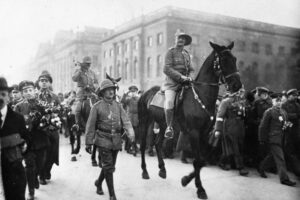 supplies that devastated the local population. Finally, the German army surrendered on November 25, 1918, in Zambia, two weeks after the November 11, 1918 armistice ended hostilities. Of course, Hitler knew a great officer when he saw one, and so after the war, Hitler immediately offered von Lettow-Vorbek a prestigious position in the Third Reich. In what most would consider a complete shock, von Lettow-Vorbeck bluntly refused the offer, using some very “colorful” language, which shall not be repeated here. It was a courageous, but not very wise move, given the circumstances. Nevertheless, his boldness, as well as his loyalty to the German people, paid off. Von Lettow-Vorbeck was simply too popular with the German people to be eliminated by the regime. He lived to be 94.
supplies that devastated the local population. Finally, the German army surrendered on November 25, 1918, in Zambia, two weeks after the November 11, 1918 armistice ended hostilities. Of course, Hitler knew a great officer when he saw one, and so after the war, Hitler immediately offered von Lettow-Vorbek a prestigious position in the Third Reich. In what most would consider a complete shock, von Lettow-Vorbeck bluntly refused the offer, using some very “colorful” language, which shall not be repeated here. It was a courageous, but not very wise move, given the circumstances. Nevertheless, his boldness, as well as his loyalty to the German people, paid off. Von Lettow-Vorbeck was simply too popular with the German people to be eliminated by the regime. He lived to be 94.
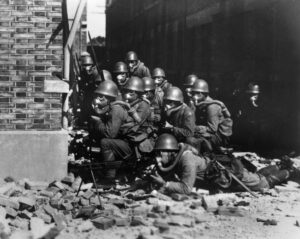 What would make a tiny nation try to invade a nation that is more that 25 times larger, with a population that is at least 8 times larger? It makes no sense, and yet on February 15, 1937, Japan attempted to invade China. Japan, with a total of 60,000 soldiers enter Northern China using planes and tanks. The invasion was something they had studied so they would have a plan before they attempted such an outlandish scheme. The type of conquest they were trying to mimic was that of Kubia Kahn, the Mongol emperor, who in 1271, established the Yuan dynasty and formally claimed orthodox succession from prior Chinese dynasties. The Yuan dynasty came to rule over most of present-day China, Mongolia, Korea, southern Siberia, and other adjacent areas. Kahn also amassed influence in the Middle East and Europe as khagan. By 1279, the Yuan conquest of the Song dynasty was completed, and Kahn became the first non-Han emperor to rule all of China proper.
What would make a tiny nation try to invade a nation that is more that 25 times larger, with a population that is at least 8 times larger? It makes no sense, and yet on February 15, 1937, Japan attempted to invade China. Japan, with a total of 60,000 soldiers enter Northern China using planes and tanks. The invasion was something they had studied so they would have a plan before they attempted such an outlandish scheme. The type of conquest they were trying to mimic was that of Kubia Kahn, the Mongol emperor, who in 1271, established the Yuan dynasty and formally claimed orthodox succession from prior Chinese dynasties. The Yuan dynasty came to rule over most of present-day China, Mongolia, Korea, southern Siberia, and other adjacent areas. Kahn also amassed influence in the Middle East and Europe as khagan. By 1279, the Yuan conquest of the Song dynasty was completed, and Kahn became the first non-Han emperor to rule all of China proper.
So, with dreams of power and world domination, among other things, including a need for the resources Japan lacked and China had, the Japanese army under Emperor Hirohito made the decision to attack the much larger  and more populated China. They threatened to bottle up 400,000 Chinese people on China’s central front. The attack area was approximately 20 miles, from the Yellow River to the Henan Capital provincial (Kaifeng). The Japanese Army displayed far superior air power and many more combat troops during the Japanese onslaught. In fact, their might could easily be called terrifying. China was helpless at stopping the Japanese forces from occupying Shanghai, and they were barely able prevent the invasion of Japan on the capital. The Chinese desperately tried to fight back with small caliber weapons against the heavy artillery fire power, air and naval might, and armored defenses of Japan. While they were severely outgunned, the bravery, stubbornness and determination of the Chinese made it possible for the country to withstand three months of defending Shanghai. Nevertheless, in the end, Shanghai fell, and Japan gained control over the city. The best of China’s troops were defeated. Still, the Japanese were surprised at the length of time that the Chinese troops were able to make a stand for their capital city. Because of their military superiority, the Japanese fully expected a short battle and a swift victory. They were not prepared for the one variable…the determination of the Chinese
and more populated China. They threatened to bottle up 400,000 Chinese people on China’s central front. The attack area was approximately 20 miles, from the Yellow River to the Henan Capital provincial (Kaifeng). The Japanese Army displayed far superior air power and many more combat troops during the Japanese onslaught. In fact, their might could easily be called terrifying. China was helpless at stopping the Japanese forces from occupying Shanghai, and they were barely able prevent the invasion of Japan on the capital. The Chinese desperately tried to fight back with small caliber weapons against the heavy artillery fire power, air and naval might, and armored defenses of Japan. While they were severely outgunned, the bravery, stubbornness and determination of the Chinese made it possible for the country to withstand three months of defending Shanghai. Nevertheless, in the end, Shanghai fell, and Japan gained control over the city. The best of China’s troops were defeated. Still, the Japanese were surprised at the length of time that the Chinese troops were able to make a stand for their capital city. Because of their military superiority, the Japanese fully expected a short battle and a swift victory. They were not prepared for the one variable…the determination of the Chinese 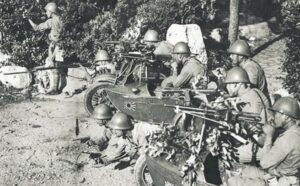 people. Morale plummeted over the heavy losses incurred, but not for long.
people. Morale plummeted over the heavy losses incurred, but not for long.
I sometimes wonder if these heads of governments really think that they can somehow control the world, or even, if they really think they can control the country they have invaded. The main reasons that nations and borders change as often as they do, is that people will only live under oppression for so long. Then, they will fight back. As to the heads of nations and ruling the world. While they might be the “head” of their nation, in a situation of world domination, I seriously doubt if any of these national leaders would be the one in control.
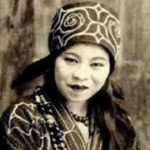 Pirates!! Men who sail the seas in search of prey…ships filled with loot, or even just people’s possessions. That is a fact, but not all pirates were, or are, men. In fact, the most successful pirate was a woman. Ching Shih was born in 1775 in Guangdong, China. She actually started out as a prostitute in China. Then her life changed. The Commander of the pirate band, the Red Flag Fleet, Cheng I (Zheng Yi), bought and married her. That could have been viewed as a terrible event in her life, but when you consider where she started, maybe not. Her new husband could have been abusive to her, but rather than just viewing her as a wife, he considered her his equal and she
Pirates!! Men who sail the seas in search of prey…ships filled with loot, or even just people’s possessions. That is a fact, but not all pirates were, or are, men. In fact, the most successful pirate was a woman. Ching Shih was born in 1775 in Guangdong, China. She actually started out as a prostitute in China. Then her life changed. The Commander of the pirate band, the Red Flag Fleet, Cheng I (Zheng Yi), bought and married her. That could have been viewed as a terrible event in her life, but when you consider where she started, maybe not. Her new husband could have been abusive to her, but rather than just viewing her as a wife, he considered her his equal and she 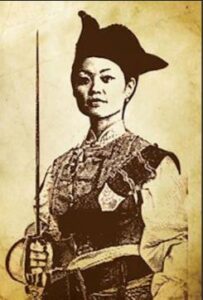 became an active pirate commander in the fleet. Ok, being a pirate was probably not the greatest career she could have had, but it was better than her past…to a degree anyway.
became an active pirate commander in the fleet. Ok, being a pirate was probably not the greatest career she could have had, but it was better than her past…to a degree anyway.
Her marriage came with the promise to cede to her the control of half of his pirate fleet and business. I’m sure the pirate gang were wondering what her husband was thinking, but Ching Shih soon earned the respect of her fellow pirates…no small feat for a woman. The other men may not have liked it at first, but by the time Ching Shih’s husband died, they trusted her completely…so much so, in fact, that she became the captain of the fleet. That was actually huge for Ching Shih, and under her leadership, the Red Flag Fleet grew to over 300 warships, with a possible 1,200 more support ships. She even had a possible 40,000 – 80,000 men, women, and  children, all of whom counted on her for their “living.” I guess you could call pirating a living…as much as bank robbery, I suppose.
children, all of whom counted on her for their “living.” I guess you could call pirating a living…as much as bank robbery, I suppose.
Over the years that Ching Shih ran the Red Flag Fleet, they terrorized the waters around China. She soon became known as the “Terror of South China.” The government tried their best to take down the ruthless pirates, but they were totally unsuccessful. Ching Shih was so good at what she did, that the Chinese government was at a loss to stop the band of pirates. Finally, she suffered a series of defeats at the hands of the Portuguese Navy, but the Qing imperial government chose to allow her band to keep the wealth gained from piracy, provided she retire in peace. She agreed, and the Chinese government pardoned Ching Shih and her entire fleet…just to get them off the high seas!! To this day, she is believed to be the most notorious, and the most successful pirate in history. Ching Shih died in 1844 in Guangdong, China. She was 69 years old.
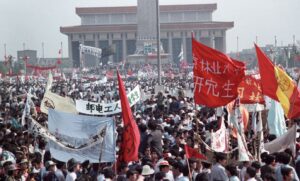 Some heroes are forever unknown, and the hero of Tiananmen Square remains unknown to this day. I’m not sure how they can manage never to tell anyone about their heroic act, but then in 1989 Bejing, China, being able to keep your mouth shut was tantamount to staying alive.
Some heroes are forever unknown, and the hero of Tiananmen Square remains unknown to this day. I’m not sure how they can manage never to tell anyone about their heroic act, but then in 1989 Bejing, China, being able to keep your mouth shut was tantamount to staying alive.
The summer of 1989 found Tiananmen Square in Bejing overtaken with pro-democracy protestors…a situation that the communist government was not happy about. Students, workers, soldiers, and teachers had joined together in peaceful protest, seeking democracy, freedom of the press, and freedom of speech. As the protests progressed, they were joined by more, and more…and still more people. At the height of the protest, an estimated one million people were milling around in the square, and their efforts were becoming known worldwide. In fact, the world was becoming inspired by the efforts of the protestors.
The Chinese government, however, was becoming highly agitated by what was going on, because they felt like they were losing control. So, on June 4, the Chinese government cracked down on those protests in the most horrific way. They sent in armed military and tanks. The inevitable result was that the government killed hundreds, and even thousands of protestors, even shooting them in the back as they were running away.
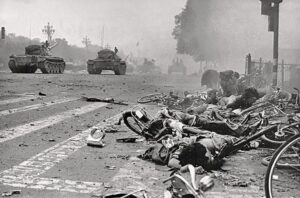
The killing continued into the next day, and just after noon on June 5 a line of eighteen tanks began rolling down Avenue of Eternal Peace. The tanks, representative of a corrupt government power, came lumbering down the street…impenetrable, unstoppable, and fully able to squash a person like a bug. The show of force continued its parade down the Avenue, toward Tiananmen Square…until one lone man stood in their way. The unknown man, dressed in a simple white shirt and black pants, holding two shopping bags, strode into the Avenue and stood directly in front of the lead tank. Amazingly, it stopped. Then the tank moved right, but the unknown man countered. Then it moved left, and he countered again. The standoff drew national attention, and the unknown man became known as “Tank Man.” The interaction lasted just a few minutes, it proved that one “everyday person” can accomplish a lot, by standing up to tyranny. One report suggested that he was the son of factory workers…a blue-collar guy growing up in a blue-collar family in a blue-collar neighborhood. And because of censorship restrictions in China, he may not even know about the images of him, or that Time Magazine named him one of the century’s “top revolutionaries.” The reality is that he wasn’t a revolutionary…at least not in the sense that he went out and fought with the resistance. He was just a guy who saw something that was horribly wrong and decided that it was enough!! His stand said simply, “No More!!”
This everyday citizen managed, single-handedly to stop the killing that day, and he intended to do it even if it 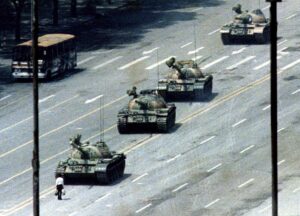 cost him his life. That is inspiring, because it tells us that if we see something wrong and decide to take action, we too can change the world. If we sit idly by and do nothing to stop tyranny, then we are no better than those who are bringing tyranny.
cost him his life. That is inspiring, because it tells us that if we see something wrong and decide to take action, we too can change the world. If we sit idly by and do nothing to stop tyranny, then we are no better than those who are bringing tyranny.
We are seeing movements just like this one man since the 2020 election. People who have never run for office before, suddenly are. People are showing up at school board meetings, city council meeting, and other such governmental meetings. People are taking a stand and proving that we are a voice to be reconned with, and we will not be bullied anymore.
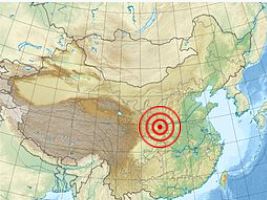 Most of us realize that there are earthquakes going on all the time. Most of them are very small, and often not even felt by anyone. Some are so far out in the ocean that they have little effect of anything. Others are far out in the wilderness or unpopulated areas, and so no one feels them. There are, however, some that are so large and so devastating, that they can never be forgotten. The January 23, 1556 earthquake in Shaanxi, China is just such an earthquake.
Most of us realize that there are earthquakes going on all the time. Most of them are very small, and often not even felt by anyone. Some are so far out in the ocean that they have little effect of anything. Others are far out in the wilderness or unpopulated areas, and so no one feels them. There are, however, some that are so large and so devastating, that they can never be forgotten. The January 23, 1556 earthquake in Shaanxi, China is just such an earthquake.
The earthquake struck Shaanxi late in the evening, and the aftershocks continuing through the following morning. I’m not sure how the scientists can calculate the magnitude years later, but their investigation revealed that the magnitude of the quake was approximately 8.0 to 8.3. That is, by no means, the strongest quake on record, but it struck right in the middle of a densely populated area with poorly constructed buildings and homes, resulting in a horrific death toll. Making buildings earthquake proof in the 1500s was not even a possibility…at least not to the level of the current building codes. Because of that, the death toll was estimated at a staggering 830,000 people. Of course, counting casualties is often imprecise after large-scale disasters, especially prior to the 20th century. Nevertheless, this disaster is still considered the deadliest of all time.
The earthquake’s epicenter was in the Wei River Valley in the Shaanxi Province, near the cities of Huaxian, 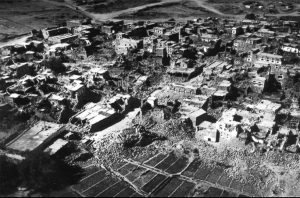 Weinan and Huayin. In Huaxian alone, every single building and home collapsed, killing more than half the residents of the city. The death toll there was estimated in the tens of thousands. Similarly, the death toll and economic impact in Weinan and Huayin was also very high. There were places where 60-foot-deep crevices opened in the earth. Serious destruction and death occurred as much as 300 miles away from the epicenter. The earthquake triggered landslides, which also contributed to the massive death toll. Of course, the estimates could be off, but even if the number of deaths caused by the Shaanxi earthquake has been overestimated slightly, it would still rank as the worst disaster in history by a considerable margin.
Weinan and Huayin. In Huaxian alone, every single building and home collapsed, killing more than half the residents of the city. The death toll there was estimated in the tens of thousands. Similarly, the death toll and economic impact in Weinan and Huayin was also very high. There were places where 60-foot-deep crevices opened in the earth. Serious destruction and death occurred as much as 300 miles away from the epicenter. The earthquake triggered landslides, which also contributed to the massive death toll. Of course, the estimates could be off, but even if the number of deaths caused by the Shaanxi earthquake has been overestimated slightly, it would still rank as the worst disaster in history by a considerable margin.
 Living in Wyoming, the one thing we can be sure of is that traffic jams are extremely uncommon here. About the only way we are going to have a traffic jam is if there is an accident at what we call rush hour…for lack of a better word. A few hours south of us, you mike find a traffic jam as you travel through Denver, Colorado during a real rush hour. Nevertheless, even traffic jams in Denver almost don’t qualify compared to other places on Earth. I have tried to think of what it might be like to be in a really bad traffic jam. I have been in some that kept me sitting for over an hour, but even that was nothing compared to the longest traffic jam in history.
Living in Wyoming, the one thing we can be sure of is that traffic jams are extremely uncommon here. About the only way we are going to have a traffic jam is if there is an accident at what we call rush hour…for lack of a better word. A few hours south of us, you mike find a traffic jam as you travel through Denver, Colorado during a real rush hour. Nevertheless, even traffic jams in Denver almost don’t qualify compared to other places on Earth. I have tried to think of what it might be like to be in a really bad traffic jam. I have been in some that kept me sitting for over an hour, but even that was nothing compared to the longest traffic jam in history.
China is one of the biggest automotive markets in the world. That booming market has a downside to it too, however. It is estimated, that in 2015, there were no less than 7 million cars on the road in Beijing. Of course there are many more now. What’s more, nearly 14 million cars are purchased each year, while 650,000 vehicles meet the road every month. It’s like saying: “Hey, everybody in Beijing must have a car. No, make that two!.” The government has tried to stop residents from buying so many cars, but they haven’t had much luck with that. With all the cars on the road, traffic jams were inevitable. Nevertheless, I don’t think anyone could have predicted just how bad those traffic jams would become. In August 2010, China was crowned the unofficial “host” of the mother of all traffic jams, with a huge car panorama that stretched for more than 62 miles and lasted for 12 days. I’m quite certain that no one could have expected this, now could the motorists be prepared with food and water.
It all happened on the Beijing-Tibet Expressway near Beijing. The highway was initially designed to be used exclusively by trucks, but due to the growing number of vehicles, passenger cars started using it too. Ironically, the cause of the huge traffic jam was the road work on the highway. Trucks carrying construction supplies to Beijing, most of them supposed to be used on the expressway in order to ease traffic, were blocked at the exit, thus causing a traffic jam that lasted over 12 days. No clear statistics concerning the number of stranded drivers were given, but instead reports published on the web at that time claim that some of the cars advanced with a speed of 2 miles per day! That is shockingly slow!!
People who could started to take advantage of the situation by selling food and water to drivers. The prices were extremely high and some of the drivers even refused to buy the supplies. That was not a good idea, because in those cases they were robbed or even stabbed. Twelve days in a traffic jam is a lot, that’s pretty  clear, and even if some drivers already had bread and cigarettes as a method of precaution, everybody had to buy at least a cup of water. The prices were astronomical, and the whole situation was insane. Strangely, authorities actually expected the traffic jam to last about a month. I guess 12 days wasn’t too bad after all. Surprisingly, according to the Guinness World of Records this isn’t the longest traffic jam in history. A previous episode that took place in France, spanning from Lyon to Paris, is regarded as the biggest jam ever. It stretched for 109 miles and happened on February 16, 1980. The reason, poor weather and the huge number of cars on the French Autoroute.
clear, and even if some drivers already had bread and cigarettes as a method of precaution, everybody had to buy at least a cup of water. The prices were astronomical, and the whole situation was insane. Strangely, authorities actually expected the traffic jam to last about a month. I guess 12 days wasn’t too bad after all. Surprisingly, according to the Guinness World of Records this isn’t the longest traffic jam in history. A previous episode that took place in France, spanning from Lyon to Paris, is regarded as the biggest jam ever. It stretched for 109 miles and happened on February 16, 1980. The reason, poor weather and the huge number of cars on the French Autoroute.
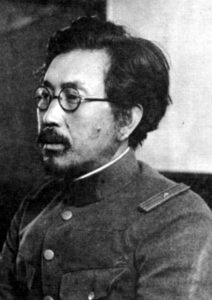 When we think of wartime atrocities, most of us think of the Holocaust, and that was indeed a horrible atrocity. Nevertheless, there have been a number of horrible dictators in history, and most of them committed some kind of atrocity. One of the worst atrocities in history, is one that very few people even know about. Most people have heard about the horrible experiments the Nazis performed on humans. The Nazi doctor, Joseph Mengele headed up that torture practice. But the Nazis weren’t alone in conducting cruel experiments on humans. The Imperial Japanese Army’s Unit 731. Some of the details of this unit’s activities are still uncovered. I don’t understand how anyone could have such little regard for human life, as to conduct some of the horrible experiments n them that some of these dictators and their cohorts did.
When we think of wartime atrocities, most of us think of the Holocaust, and that was indeed a horrible atrocity. Nevertheless, there have been a number of horrible dictators in history, and most of them committed some kind of atrocity. One of the worst atrocities in history, is one that very few people even know about. Most people have heard about the horrible experiments the Nazis performed on humans. The Nazi doctor, Joseph Mengele headed up that torture practice. But the Nazis weren’t alone in conducting cruel experiments on humans. The Imperial Japanese Army’s Unit 731. Some of the details of this unit’s activities are still uncovered. I don’t understand how anyone could have such little regard for human life, as to conduct some of the horrible experiments n them that some of these dictators and their cohorts did.
For 40 years, the horrific activities of “Unit 731” remained one the most closely guarded secrets of World War II. It was not until 1984 that Japan acknowledged what it had done and long denied. The vile experiments on humans conducted by the unit in preparation for germ warfare were atrocious. The Japanese doctors deliberately infected people with plague, anthrax, cholera and other pathogens. It is estimated that as many as 3,000 enemy soldiers and civilians were used as guinea pigs. Some of the more horrific experiments included surgery without anesthesia to see how the human body handled pain, and pressure chambers to see how much pressure a human could take before his eyes popped out.
The compound for Unit 731 was set up in 1938 in Japanese-occupied China with the aim of developing biological weapons. It also operated a secret research and experimental school in Shinjuku, central Tokyo. Its 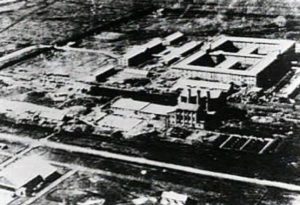 head was Lieutenant Shiro Ishii. Japanese universities and medical schools also supported the unit, by supplying doctors and research staff. I can’t imagine being assigned to such a facility. The picture now emerging about Unit 731’s activities is horrifying. According to reports, which were never officially admitted by the Japanese authorities, the unit used thousands of Chinese and other Asian civilians and wartime prisoners as human guinea pigs to breed and develop killer diseases. Many of the prisoners, who were murdered in the name of research, were used in hideous vivisection and other medical experiments, including barbaric trials to determine the effect of frostbite on the human body. To ease the conscience of those involved, if that is even possible, the prisoners were referred to not as people or patients, but as “Maruta”, which means wooden logs. I suppose they thought it would help, but I doubt if it did.
head was Lieutenant Shiro Ishii. Japanese universities and medical schools also supported the unit, by supplying doctors and research staff. I can’t imagine being assigned to such a facility. The picture now emerging about Unit 731’s activities is horrifying. According to reports, which were never officially admitted by the Japanese authorities, the unit used thousands of Chinese and other Asian civilians and wartime prisoners as human guinea pigs to breed and develop killer diseases. Many of the prisoners, who were murdered in the name of research, were used in hideous vivisection and other medical experiments, including barbaric trials to determine the effect of frostbite on the human body. To ease the conscience of those involved, if that is even possible, the prisoners were referred to not as people or patients, but as “Maruta”, which means wooden logs. I suppose they thought it would help, but I doubt if it did.
Before Japan’s surrender, the site of the experiments was completely destroyed, so that no evidence is left. I don’t suppose we would have known anything had it not been for the pictures that have surfaced, and people who have told the story later. After the site was destroyed, the remaining 400 prisoners were shot and the employees of the unit had to swear secrecy, or risk their own death. The mice kept in the laboratory were then 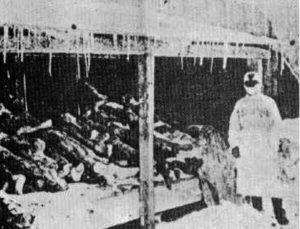 released, which most likely cost the lives of as many as 30,000 people, because the mice were infected with the Bubonic Plague, and they spread the disease. Few of those involved with Unit 731 have admitted their guilt. Some were caught in China at the end of the war, were arrested and detained, but only a handful of them were prosecuted for war crimes. In Japan, not one was brought to justice. In a secret deal, the post-war American administration gave them immunity for prosecution in return for details of their experiments. Some of the worst criminals, including Hisato Yoshimura, who was in charge of the frostbite experiments, went on to occupy key medical and other posts in public and private sectors…their guilty feelings, if they had any, existed only in their own minds.
released, which most likely cost the lives of as many as 30,000 people, because the mice were infected with the Bubonic Plague, and they spread the disease. Few of those involved with Unit 731 have admitted their guilt. Some were caught in China at the end of the war, were arrested and detained, but only a handful of them were prosecuted for war crimes. In Japan, not one was brought to justice. In a secret deal, the post-war American administration gave them immunity for prosecution in return for details of their experiments. Some of the worst criminals, including Hisato Yoshimura, who was in charge of the frostbite experiments, went on to occupy key medical and other posts in public and private sectors…their guilty feelings, if they had any, existed only in their own minds.


 My second cousin, Brian Schumacher and his wife, Lisa are two amazing people. Over the years of their marriage, they have been blessed with a beautiful group of children…but not in exactly the way you might expect. Brian’s first marriage, when he was 19 years old, gave him his first child…a daughter named Angie Marie was born January 8th, 1976, but that marriage ended in divorce. Brian married Lisa Basley on August 4, 1979. Their marriage was first blessed with a son, Brian Leslie born on February 8, 1980. Then, on May 20th, 1981 Lisa gave birth to another son, Nicholas Lee, and on June 29th, 1982, a daughter, Elizabeth Ann. Hemorrhaging during baby Elizabeth’s delivery brought with it the need for a hysterectomy for Lisa at age 29. She and Brian thought their days of having babies were over. They were quite sad about that because they had wanted more children, but God had a different plan for them.
My second cousin, Brian Schumacher and his wife, Lisa are two amazing people. Over the years of their marriage, they have been blessed with a beautiful group of children…but not in exactly the way you might expect. Brian’s first marriage, when he was 19 years old, gave him his first child…a daughter named Angie Marie was born January 8th, 1976, but that marriage ended in divorce. Brian married Lisa Basley on August 4, 1979. Their marriage was first blessed with a son, Brian Leslie born on February 8, 1980. Then, on May 20th, 1981 Lisa gave birth to another son, Nicholas Lee, and on June 29th, 1982, a daughter, Elizabeth Ann. Hemorrhaging during baby Elizabeth’s delivery brought with it the need for a hysterectomy for Lisa at age 29. She and Brian thought their days of having babies were over. They were quite sad about that because they had wanted more children, but God had a different plan for them.
Brian got saved in 1981, while working as a track layer on the railroad. A friend started telling him about Jesus and Brian became a “Jesus Freak” according to Lisa. At first Lisa was pretty uncomfortable with all that. She told him that if he didn’t stop telling everyone about Jesus, she was going to leave him. Once again, God had a different plan. One night in their bedroom Lisa awoke to a “bright light and a voice that sounded like Niagara Falls.” Jesus appeared to her and she kept saying take me with you. She knew that she wanted this Jesus in her life. Brian slept through the entire event, but Lisa was changed forever. She was no longer nervous about Brian talking to people about Jesus. She knew it was their calling. Still, in the back of their minds, the desire for more children continued to grow, and they would find out that God had a different plan for them again.
They checked into the possibility of adopting a baby in the 1990s, when their three children were under 10, and Angie was a teenager, but that was not God’s plan either, so they waited. Then, in God’s perfect timing, they got a call. It was 1992, and a friend said that she knew a girl that was pregnant and wanted to know if they were interested in adopting the baby. Brian and Lisa prayed about it and felt like God was telling them to do it. Their daughter, Grace Beverly was born August 11, 1993. Then, two years later, they got a call, saying that the 

 same girl was pregnant again. She offered Brian and Lisa that baby too. Their daughter, Angel Danell was born June 12, 1995. God’s plans never have mistakes in them. He wanted these two girls to have each other…and a great family. In 1996, God changed their lives again when their children’s cousin became pregnant, and couldn’t keep the baby at the time, and since she was enrolled in the tribe, family had the option to adopt first because the Native Americans prefer to keep a child close, but God made a way for Brian and Lisa, and their son Noah Richard was born August 4, 1997. At this point, Brian and Lisa thought their family was probably complete, but as they were learning, God had a different plan. A woman they met at their church had just come back from working in an orphanage in China. While there, she fell in love with a little girl called Precious. Brian and Lisa quickly fell in love too, and they felt that God was calling them to adopt Precious. Again, they would learn that God’s plans are sometimes different than ours. The adoption of Precious did not work out, but there was another child…a baby girl who needed a family. Brian and Lisa raised the $30,000 plus dollars to go to China and pick up that 6 month old baby. Their daughter Hope Elizabeth was born on September 23rd, 2001.
same girl was pregnant again. She offered Brian and Lisa that baby too. Their daughter, Angel Danell was born June 12, 1995. God’s plans never have mistakes in them. He wanted these two girls to have each other…and a great family. In 1996, God changed their lives again when their children’s cousin became pregnant, and couldn’t keep the baby at the time, and since she was enrolled in the tribe, family had the option to adopt first because the Native Americans prefer to keep a child close, but God made a way for Brian and Lisa, and their son Noah Richard was born August 4, 1997. At this point, Brian and Lisa thought their family was probably complete, but as they were learning, God had a different plan. A woman they met at their church had just come back from working in an orphanage in China. While there, she fell in love with a little girl called Precious. Brian and Lisa quickly fell in love too, and they felt that God was calling them to adopt Precious. Again, they would learn that God’s plans are sometimes different than ours. The adoption of Precious did not work out, but there was another child…a baby girl who needed a family. Brian and Lisa raised the $30,000 plus dollars to go to China and pick up that 6 month old baby. Their daughter Hope Elizabeth was born on September 23rd, 2001.
It was at this point that Brian and Lisa knew that their family was complete…at least until the grandchildren began to arrive. They marveled at the blessings God had given them. Their story doesn’t end here though. There were reasons that each of these precious adopted daughters were given their names. Grace received her name because they felt like, in a time just after Lisa’s dad’s passing God gave them Grace. Angel was just so sweet, they all kept calling her a little angel, and the name just stuck. Hope arrived at a time when Lisa felt like she had none and God gave her Hope to fill them all with Joy. As I was visiting with Brian and Lisa’s daughter, Elizabeth, in preparation for this story, she summed her parents up like this, “Pretty amazing…when I look back at what sacrifices that were made and the money, time, and love they have given all of us…well, God has been faithful to our family. If it weren’t for the color of our skin or eyes no one would know that were weren’t blood 
 relatives. It’s like the adoption creed says that my parents have in their house ‘Not flesh of my flesh nor bone of my bone, but still miraculously my own. Never forget for a single minute, you didn’t grow from my heart, but in it.’ I like to brag on my parents because you won’t find a couple that has struggled more, had so many sleepless nights with their children trying to find their own and loving unconditionally and always keeping Jesus in the center.” That is such a beautiful tribute to a beautiful couple, from a loving daughter.
relatives. It’s like the adoption creed says that my parents have in their house ‘Not flesh of my flesh nor bone of my bone, but still miraculously my own. Never forget for a single minute, you didn’t grow from my heart, but in it.’ I like to brag on my parents because you won’t find a couple that has struggled more, had so many sleepless nights with their children trying to find their own and loving unconditionally and always keeping Jesus in the center.” That is such a beautiful tribute to a beautiful couple, from a loving daughter.
 From the end of World War II, until the mid 1990s, the world was in the middle of the Cold War. The Soviet Union had developed atomic weapons, and they were threatening to use them. Tensions were high, because they were flexing all the military muscle they could. A common part of the administration was make sure that the people of the United States were ready for the very real possibility of an attack. The Eisenhower administration formed the Federal Civil Defense Administration (FCDA), later called the Office of Civil Defense, to instruct the people on what to do in the event of a nuclear attack.
From the end of World War II, until the mid 1990s, the world was in the middle of the Cold War. The Soviet Union had developed atomic weapons, and they were threatening to use them. Tensions were high, because they were flexing all the military muscle they could. A common part of the administration was make sure that the people of the United States were ready for the very real possibility of an attack. The Eisenhower administration formed the Federal Civil Defense Administration (FCDA), later called the Office of Civil Defense, to instruct the people on what to do in the event of a nuclear attack.
On this day, October 6, 1961, President Kennedy urged the people of the United States to build bomb shelters, so they could live through the nuclear fallout in the event of an attack. I was a girl of just five years, in 1961, but I vividly remember seeing those fallout shelters and knowing that it was possible that the day could come when we might have to take shelter there. That is pretty scary stuff for a five year old girl, but it was simply the world we lived in.
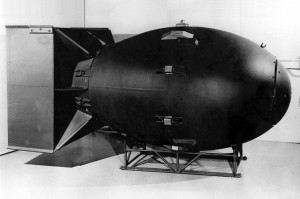 When I fast forward to this day and age, I have to wonder why some of the same precautions aren’t being put in place by this administration. We all know that Iran has nuclear weapons, and Russia, along with China, are beefing up their forces too. In many ways, the Cold War is in full force again, and no one seems to be reacting to the dangers. Maybe it is because we are getting used to the threat of nuclear war, but it still seems odd to me that there is not more preparation. Even I must admit that as a child, the fallout shelters were a source of unease for me, but now…even with the threat of nuclear war constantly in the news, I just don’t feel the same kind of concern…though maybe I should.
When I fast forward to this day and age, I have to wonder why some of the same precautions aren’t being put in place by this administration. We all know that Iran has nuclear weapons, and Russia, along with China, are beefing up their forces too. In many ways, the Cold War is in full force again, and no one seems to be reacting to the dangers. Maybe it is because we are getting used to the threat of nuclear war, but it still seems odd to me that there is not more preparation. Even I must admit that as a child, the fallout shelters were a source of unease for me, but now…even with the threat of nuclear war constantly in the news, I just don’t feel the same kind of concern…though maybe I should.
A fallout shelter was intended to reduce casualties in a nuclear war. It is designed to allow those inside it to avoid exposure to harmful fallout from a nuclear blast and its likely aftermath of radiation until radioactivity has dropped to a safer level. A basic fallout shelter consists of shielding that reduces gamma ray exposure. The most dangerous fallout has the consistency of sand or finely ground pumice, so a fallout shelter would not need to filter fine dust from air. The fine dust emits relatively little radiation. Concrete, bricks, earth, and sand are  some of the materials that are dense or heavy enough to provide fallout protection. Basically this shelter could be much like a tornado shelter, except that it would need to have a door that seals completely.
some of the materials that are dense or heavy enough to provide fallout protection. Basically this shelter could be much like a tornado shelter, except that it would need to have a door that seals completely.
Concrete was the most often used building material of fallout shelters, with walls at least 12 inches thick. The required shielding could be accomplished with 10 times the amount of any quantity of material capable of cutting gamma ray effects in half. Shields that reduce gamma ray intensity by 50 percent include 0.4 inches of lead, 2.4 inches of concrete, 3.6 inches of packed dirt or 500 feet of air. I suppose the main concern for most of us the difficulty building one of these shelters, Nevertheless, that is exactly what President Kennedy urged the people to do, and what many of them did do. It was terrifying stuff, and it makes you wonder what is wrong with people who would even consider detonating one of these nuclear bombs.
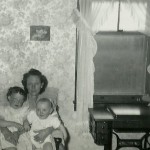 I saw a picture today of an antique treadle sewing machine, and it took me back to the visits to Bob’s grandmother’s place in Montana. Grandma’s house was filled with antiques. Of course, at the time she bought those things, they were probably fairly new when she bought them. Of course it was not the antiques in Grandma’s house that really came to mind, but the living room they were in, and all the wonderful times we had in that living room. It was the talks and laughter we had there, and looking at her old pictures, and watching my girls playing while their grandmother just enjoyed the time she got to spend with them and us, and the time we got to spend with her. Precious time.
I saw a picture today of an antique treadle sewing machine, and it took me back to the visits to Bob’s grandmother’s place in Montana. Grandma’s house was filled with antiques. Of course, at the time she bought those things, they were probably fairly new when she bought them. Of course it was not the antiques in Grandma’s house that really came to mind, but the living room they were in, and all the wonderful times we had in that living room. It was the talks and laughter we had there, and looking at her old pictures, and watching my girls playing while their grandmother just enjoyed the time she got to spend with them and us, and the time we got to spend with her. Precious time.

I remember watching my girls trying to play the piano. They played happily…until we could no longer stand it. Even the songs they played fairly well…like Chop Sticks…got old after a while. Still, like my in-laws the memories of moments at and in front of that old piano will always stay in the memory files of my mind. They aren’t there just because of watching my girls playing there, but because of the reminders they bring of Grandma and Grandpa, and the wonderful visits we always had when we went for our yearly visits.
I remember the times that Grandma would show us the  beautiful china she kept in the antique hutch. The hutch was so beautiful. Of course the hutch also contained various little knick knacks and other little mementos from grandmas life. You can tell a lot about a person by the things they collect, and Grandma loved beauty. From the things she sewed to the things she collected. Her beauty, both inside and out, was revealed. Still, it was not the hutch that brought the warmth to the room, but the memories the room contained. Grandma’s house was always such a pleasant place to be. It was a house filled with the beauty that was Grandma, and I can tell you from my own experience, that Grandma was a beautiful lady…inside and out.
beautiful china she kept in the antique hutch. The hutch was so beautiful. Of course the hutch also contained various little knick knacks and other little mementos from grandmas life. You can tell a lot about a person by the things they collect, and Grandma loved beauty. From the things she sewed to the things she collected. Her beauty, both inside and out, was revealed. Still, it was not the hutch that brought the warmth to the room, but the memories the room contained. Grandma’s house was always such a pleasant place to be. It was a house filled with the beauty that was Grandma, and I can tell you from my own experience, that Grandma was a beautiful lady…inside and out.

